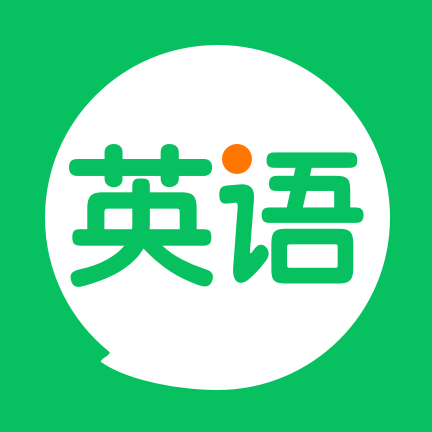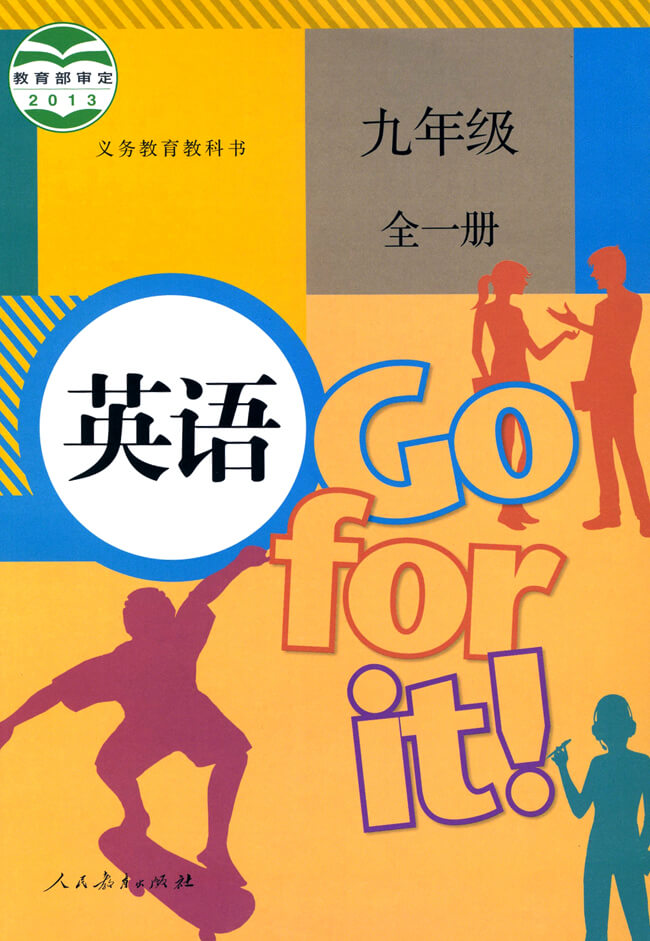英语人教新目标版九年级全一册课文目录
UNIT 5 What are the shirts made of?课文翻译及听力音频
UNIT 5 翻译:第 5 单元
Section A 翻译:A 部分
What are the shirts made of? 翻译:这些衬衫是什么材料做的?
Language Goal: Talk about what products are made of and where they were made 翻译:语言目标:谈论产品是由什么制成的以及它们是在哪里制造的
1a. What are these things usually made of? 翻译:1a.这些东西通常是什么做的?
Match them with the materials. More than one answer is possible. 翻译:将它们与材料匹配。答案可能不唯一。
Things 翻译:物品
1. chopsticks 翻译:1. 筷子
2. window 翻译:2. 窗户
3. coin 翻译:3. 硬币
4. stamp 翻译:4. 邮票
5. fork 翻译:5. 叉子
6. blouse 翻译:6. 衬衫
Materials 翻译:材质
a. wood 翻译:a. 木头
b. gold 翻译:b. 黄金
c. silver 翻译:c. 银
d. paper 翻译:d. 纸
e. silk 翻译:e. 丝绸
f. glass 翻译:f. 玻璃
Hey, do you think this ring looks OK? 翻译:嘿,你觉得这个戒指好看吗?
Hmm ... yes. I think it's quite pretty. Is it made of silver? 翻译:嗯⋯⋯是的。我觉得很漂亮。它是银制的吗?
Yes, and it was made in Thailand. 翻译:是的,而且是泰国制造的。
1b. 翻译:1b.
Listen and match the products with what they are made of and where they were made. 翻译:听录音,把产品与材质、产地相匹配。
Susan: Hi, Anita. I bought three shirts for 29 dollars yesterday! Anita: Oh, really? What are they made of though? 翻译:苏珊:嗨,安妮塔。昨天我花 29 美元买了三件衬衫! 安妮塔:哦,真的吗?它们是什么材质的?
Sometimes the cheap ones are made of materials that don't feel very good. 翻译:有时候便宜的衬衫是用触感不好的材料制成的。
Susan: A hundred percent cotton. They're nice and soft, and they were made in America. 翻译: 苏珊:百分百纯棉的。它们很舒适柔软,而且是美国制造。
Anita: Oh, OK. By the way, where did you buy those chopsticks? They're really cool! 翻译: 安妮塔:哦,好的。顺便问一下,那些筷子你在哪里买的?它们真酷!
Susan: Oh, I got them in Korea. They're nice, aren't they? Anita: Yeah. Chopsticks are usually made of wood. 翻译: 苏珊:哦,我在韩国买的。它们很棒,不是吗? 安妮塔:是的。筷子通常是木制的。
I've never seen steel ones before. Susan: Oh, steel chopsticks are popular in Korea. 翻译:我以前从未见过钢制的。 苏珊:哦,钢制筷子在韩国很流行。
Hey, do you think this ring looks OK? Anita: Hmm ... yes, I think it's quite pretty. 翻译:嘿,你觉得这个戒指好看吗? 安妮塔:嗯⋯⋯是的,我觉得它很漂亮。
Is it made of silver? Susan: Yes, and it was made in Thailand. 翻译:它是银制的吗? 苏珊:是的,而且是泰国制造的。
I'll give it to my best friend for her birthday. Anita: Oh, I'm sure she'll love it. 翻译:我要把它送给我最好的朋友当做生日礼物。 安妮塔:哦,我相信她会喜欢的。
1c. Practice the conversation in 1a. 翻译:1c.练习 1a 中的对话。
Then make conversations using the information in 1b. 翻译:然后用 1b 中的信息进行对话。
This ring looks nice. Is it made of silver? 翻译:这枚戒指看起来不错。它是银制的吗?
Yes, and it was made in Thailand. 翻译:是的,而且是泰国制造的。
2a. Listen and check (√) the main topic of Nick and Marcus' conversation. 翻译:2a.听录音,勾选出(√)尼克和马库斯对话的主要话题。
Nick: Hey, Marcus, have you heard about the art and science fair? 翻译:尼克:嘿,马库斯,你听说过艺术和科学博览会吗?
Marcus: You mean the one just outside the science museum? Nick: Yeah, that's the one. 翻译: 马库斯:你是说就在科学博物馆外面举办的那个? 尼克:是的,就是那个。
The school notice board says that all students are invited to attend for free! 翻译:学校通知栏说所有的学生都被邀请免费参加!
Our school is paying for it! Marcus: Wow, that's great! Nick: I went there yesterday. 翻译:学校为我们付了钱! 马库斯:哇,那太棒了! 尼克:我昨天去了。
Marcus: Did you see anything cool? Nick: Of course! All the works there were made by university students. 翻译: 马库斯:你看到酷酷的东西了吗? 尼克:当然!那里所有的作品都出自大学生之手。
Marcus: What did you see? Nick: I saw a huge model plane. It's made of used wood and glass. 翻译: 马库斯:你看到了什么? 尼克:我看见了一个巨大的飞机模型。它是由用过的木头和玻璃制成的。
I also saw a really beautiful painting. It's made from grass, leaves and flowers. 翻译:我还看见了一幅很漂亮的画。它是由草、叶子和花做成的。
Marcus: Oh, yeah, the fair is about environmental protection and recycling, right? 翻译:马库斯:哦,是的,这个博览会是关于环境保护和回收利用的,对吗?
Nick: Yes, and the students came up with some really interesting and creative ideas. 翻译: 尼克:是的,这些大学生们想出了一些真正有趣、有创意的点子。
2b. Listen again. Write short answers to the questions. 翻译:2b.再听一遍。简要回答问题。
Nick: Hey, Marcus, have you heard about the art and science fair? 翻译:尼克:嘿,马库斯,你听说过艺术和科学博览会吗?
Marcus: You mean the one just outside the science museum? Nick: Yeah, that's the one. 翻译: 马库斯:你是说就在科学博物馆外面举办的那个? 尼克:是的,就是那个。
The school notice board says that all students are invited to attend for free! 翻译:学校通知栏说所有的学生都被邀请免费参加!
Our school is paying for it! Marcus: Wow, that's great! Nick: I went there yesterday. 翻译:学校为我们付了钱! 马库斯:哇,那太棒了! 尼克:我昨天去了。
Marcus: Did you see anything cool? Nick: Of course! All the works there were made by university students. 翻译: 马库斯:你看到酷酷的东西了吗? 尼克:当然!那里所有的作品都出自大学生之手。
Marcus: What did you see? Nick: I saw a huge model plane. It's made of used wood and glass. 翻译: 马库斯:你看到了什么? 尼克:我看见了一个巨大的飞机模型。它是由用过的木头和玻璃制成的。
I also saw a really beautiful painting. It's made from grass, leaves and flowers. 翻译:我还看见了一幅很漂亮的画。它是由草、叶子和花做成的。
Marcus: Oh, yeah, the fair is about environmental protection and recycling, right? 翻译: 马库斯:哦,是的,这个博览会是关于环境保护和回收利用的,对吗?
Nick: Yes, and the students came up with some really interesting and creative ideas. 翻译: 尼克:是的,这些大学生们想出了一些真正有趣、有创意的点子。
2c. Make conversations using the information in 2a and 2b. 翻译:2c.使用 2a 和 2b 中的信息进行对话。
What did you see at the art and science fair? 翻译:你在艺术和科学博览会上看到了什么?
I saw ... 翻译:我看到了⋯⋯
What is it made of/from? 翻译:它是由什么制成的?
2d. Role-play the conversation. 翻译:2d.分角色表演对话。
China is famous for tea, right? 翻译:中国的茶很有名,是吗?
Yes, both in the past and now. 翻译:是的,过去和现在都很出名。
Where is tea produced in China? 翻译:中国哪些地方产茶呢?
Well, in many different areas. 翻译:哦,很多不同的地区都产茶。
For example, Anxi and Hangzhou are widely known for their tea. 翻译:比如,安溪和杭州都是著名的产茶地。
How is tea produced? 翻译:茶叶是怎样生产的?
Well, as far as I know, tea plants are grown on the sides of mountains. 翻译:嗯,就我所知,茶树种植在山坡上。
When the leaves are ready, they are picked by hand 翻译:叶子长好后,人们就手工把叶子采摘下来,
and then are sent for processing. 翻译:然后送去加工。
What happens next? 翻译:接下来呢?
The tea is packed and sent to many different countries and places around China. 翻译:接下来将加工好的茶叶打包,然后运往不同的国家和国内不同地方。
It seems that many people all over the world drink Chinese tea. 翻译:全世界好多人都好像在喝中国茶。
Yes, people say that tea is good for both health and business! 翻译:是的,大家都说茶对健康和生意都有好处!
3a. Read the passage. 翻译:3a.读短文。
What two things did Kang Jian want to buy in America? Where were they made? 翻译:康健要在美国买两件什么?它们产自哪里?
The Difficult Search for American Products in the US 翻译:在美国为买美国产品的艰难搜寻
If you go to another country, what kinds of things would you buy? 翻译:如果你去另外一个国家,你想买哪类东西呢?
Would you buy a camera in Japan, some beautiful clothes in France, or a watch in Switzerland? 翻译:在日本你会买相机吗?在法国买漂亮的衣服?或者在瑞士买块手表?
No matter what you may buy, you might think those products were made in those countries. 翻译:无论你会买什么,你也许会认为那些产品一定就是那些国家制造的。
However, you could be wrong. 翻译:可是,你可能想错了。
Kang Jian is a 17-year-old student from Shanghai. 翻译:康健是名来自上海的 17 岁的学生。
Last year he went to visit his aunt and uncle in San Francisco. 翻译:去年他去旧金山拜访了自己的叔叔婶婶。
He found it interesting that so many products in the local shops were made in China. 翻译:他发现了一个有趣的现象,当地商店里许多产品都是中国制造的。
'I wanted to buy a toy car for my cousin, but even though most of the toys were American brands, they were made in China.' 翻译:“我想给堂弟买辆玩具车,可是,尽管多数玩具是美国的牌子,但它们都是中国制造的。”
Toys are not the only things made in China. 翻译:不光玩具是中国制造。
'I wanted to buy a pair of basketball shoes,' he explains. 翻译:“我想买一双篮球鞋,”他解释道,
'But I had to visit five or six stores before finding a pair made in America!' 翻译:“我找了五到六个商店才找到一双美国制造的!”
He realized that Americans can hardly avoid buying products made in China. 翻译:他感觉美国人想不买中国产品几乎不太可能。
'In fact,' he continues, 'there were many other things there made in China - footballs, handbags, pet food, mobile phones. 翻译:“事实上,”他接着说道,“那里太多中国制造的东西――足球、手提包、宠物食品、手机。
Even American flags are made in China!' Kang Jian thinks it's great that China is so good at making these everyday things. 翻译:甚至美国国旗都是中国制造的!”康健觉得中国能制造这些日用品是件好事。
More importantly, 翻译:更加重要的是,
China is also making more high-technology products that people can buy and use in all parts of the world. 翻译:中国还在制造更多高科技产品,人们可以在世界各地买到和使用这些产品。
3b. Read the passage and answer the questions. 翻译:3b.阅读短文并回答问题。
1. Where did Kang Jian go to visit his aunt and uncle? 翻译:1. 康健去哪里看望他的叔叔婶婶?
2. What did he discover in the toy stores? 翻译:2. 他在玩具店里发现了什么?
3. Why did he have to visit many stores before buying a pair of basketball shoes? 翻译:3. 为什么他在买一双篮球鞋之前要逛很多店?
4. What did he realize after his shopping experiences? 翻译:4. 经历购物之后,他意识到了什么?
5. Why do you think so many products, including high-technology products, are made in China now? How do you feel about this? 翻译:5.你觉得为什么有那么多产品,包括高科技产品,现在都是中国制造吗?你对此有何感想?
3c. 翻译:3c.
Read the passage again and write what the words in bold refer to. 翻译:再读一遍短文,写出粗体词所指的内容。
Grammar Focus 翻译:语法聚焦
Are your shirts made of cotton? 翻译:你的衬衫是棉的吗?
Yes, they are. And they were made in the US. 翻译:是的。而且它们是美国制造的。
What's the model plane made of? 翻译:飞机模型是用什么做的?
It's made of used wood and glass. 翻译:它是由用过的木头和玻璃制成的。
Where is tea produced in China? 翻译:中国哪里产茶?
It's produced in many different areas. 翻译:许多不同的地区都生产(茶)。
How is tea produced? 翻译:茶是怎样生产的?
Tea plants are grown on the sides of mountains. 翻译:茶树种植在山坡上。
When the leaves are ready, they are picked by hand and then are sent for processing. 翻译:当叶子长好时,人们手工采摘茶叶,然后送去加工。
Active Voice: People grow tea in Hangzhou. 翻译:主动语态:杭州人种植茶叶。
Passive Voice: Tea is grown (by people) in Hangzhou. 翻译: 被动语态:茶由杭州人种植。
4a. 翻译:4a.
Complete the sentences with the correct forms of the verbs in brackets. 翻译:用括号内动词的正确形式完成句子。
4b. Rewrite the sentences using the passive voice. 翻译:4b.用被动语态改写句子。
1. Farmers plant the tea on the sides of mountains. 翻译:1. 茶农在山坡上种植茶叶。
The tea is planted on the sides of mountains by farmers. 翻译: 茶叶由茶农种植在山坡上。
2. This shop uses the best materials to make dresses. 翻译:2. 这家店用最好的材料做衣服。
3. The judge punished the careless driver for the traffic accident. 翻译:3. 法官因交通事故处罚了粗心的司机。
4. The postman brings letters and postcards to people's homes. 翻译:4. 邮递员把信件和明信片送到人们家里。
5. Our family does not use this silver plate very often. 翻译:5. 我们家不经常使用这个银制的盘子。
4c. Ask five classmates about something they are wearing or have in their schoolbags. 翻译:4c.向五位同学询问他们穿戴的东西或书包里的东西。
The list of words below may help you. 翻译:下面列出的单词可能会对你有所帮助。
pencil 翻译:铅笔
jacket 翻译:夹克
sweater 翻译:毛衣
T-shirt 翻译:T 恤衫
shoes 翻译:鞋
cap 翻译:帽子
gloves 翻译:手套
ring 翻译:戒指
What's your pencil made of? 翻译:你的铅笔是什么做的?
It's made of wood. 翻译:它是木头做的。
Where was it made? 翻译:它是在哪里制造的?
It was made in Shanghai. 翻译:它是上海制造的。
Section B 翻译:B 部分
1a. Do you know how to fly a kite? 翻译:1a.你知道怎么放风筝吗?
What are kites made of? Write down some materials used in making kites. 翻译:风筝是什么做的?写下一些用于制作风筝的材料。
1b. 翻译:1b.
Listen to a conversation between Laura and Zheng Yun and circle the correct answers. 翻译:听劳拉和郑云的对话,圈出正确的答案。
Laura: Hey, Zheng Yun! Zheng Yun: Hi, Laura. Laura: How was your vacation? Zheng Yun: It was great! 翻译:劳拉:嘿,郑云! 郑云:嗨,劳拉。 劳拉:你的假期玩得怎么样? 郑云:很棒!
I went to Weifang in Shandong. Laura: That's the city famous for kites, right? 翻译:我去了山东潍坊。 劳拉:那是个以风筝闻名的城市,对吗?
Zheng Yun: Yes. There's an international kite festival there every April. That's why I went there. Laura: How interesting! 翻译: 郑云:是的。那里每年四月都会举办国际风筝节。这就是我去那儿的原因。 劳拉:真有趣!
What happens at the festival? Zheng Yun: People from all over the world compete in kite flying. 翻译:在那个节日发生了什么? 郑云:来自世界各地的人们参加放风筝比赛。
There are also competitions for the best kites. Laura: Were the kites nice? Zheng Yin: They were beautiful. 翻译:还有最佳风筝争夺赛。 劳拉:风筝很漂亮吗? 郑云:它们很漂亮。
They were made of different things like silk or paper. Some were painted with colorful drawings. 翻译:它们由不同的材料制成,比如丝绸或纸。有一些还画上了五彩斑斓的画。
Laura: Sounds like you really enjoyed it. I never thought that something as simple as kite flying could be so exciting. 翻译: 劳拉:听起来你真的很喜欢这个节日。我从未想过像放风筝这样简单的事情也会如此激动人心。
Zheng Yun: Yes, it was really fun to see which kite could fly the highest. 翻译: 郑云:是的,看哪个风筝飞得最高真的很有趣。
Laura: I think I want to learn to fly a kite, too! 翻译: 劳拉:我觉得我也想学习放风筝了。
1c. 翻译:1c.
Listen again and write L for Laura or Z for Zheng Yun. 翻译:再听一遍,在下方写 L(劳拉)或 Z(郑云)。
Laura: Hey, Zheng Yun! Zheng Yun: Hi, Laura. Laura: How was your vacation? Zheng Yun: It was great! 翻译:劳拉:嘿,郑云! 郑云:嗨,劳拉。 劳拉:你的假期玩得怎么样? 郑云:很棒!
I went to Weifang in Shandong. Laura: That's the city famous for kites, right? 翻译:我去了山东潍坊。 劳拉:那是个以风筝闻名的城市,对吗?
Zheng Yun: Yes. There's an international kite festival there every April. That's why I went there. Laura: How interesting! 翻译: 郑云:是的。那里每年四月都会举办国际风筝节。这就是我去那儿的原因。 劳拉:真有趣!
What happens at the festival? Zheng Yun: People from all over the world compete in kite flying. 翻译:在那个节日发生了什么? 郑云:来自世界各地的人们参加放风筝比赛。
There are also competitions for the best kites. Laura: Were the kites nice? Zheng Yin: They were beautiful. 翻译:还有最佳风筝争夺赛。 劳拉:风筝很漂亮吗? 郑云:它们很漂亮。
They were made of different things like silk or paper. Some were painted with colorful drawings. 翻译:它们由不同的材料制成,比如丝绸或纸。有一些还画上了五彩斑斓的画。
Laura: Sounds like you really enjoyed it. I never thought that something as simple as kite flying could be so exciting. 翻译: 劳拉:听起来你真的很喜欢这个节日。我从未想过像放风筝这样简单的事情也会如此激动人心。
Zheng Yun: Yes, it was really fun to see which kite could fly the highest. 翻译: 郑云:是的,看哪个风筝飞得最高真的很有趣。
Laura: I think I want to learn to fly a kite, too! 翻译: 劳拉:我觉得我也想学习放风筝了。
1d. Listen again. Fill in the blanks with what you hear. 翻译:1d.再听一遍。根据你所听到的内容填空。
Laura: Hey, Zheng Yun! Zheng Yun: Hi, Laura. Laura: How was your vacation? Zheng Yun: It was great! 翻译:劳拉:嘿,郑云! 郑云:嗨,劳拉。 劳拉:你的假期玩得怎么样? 郑云:很棒!
I went to Weifang in Shandong. Laura: That's the city famous for kites, right? 翻译:我去了山东潍坊。 劳拉:那是个以风筝闻名的城市,对吗?
Zheng Yun: Yes. There's an international kite festival there every April. That's why I went there. Laura: How interesting! 翻译: 郑云:是的。那里每年四月都会举办国际风筝节。这就是我去那儿的原因。 劳拉:真有趣!
What happens at the festival? Zheng Yun: People from all over the world compete in kite flying. 翻译:在那个节日发生了什么? 郑云:来自世界各地的人们参加放风筝比赛。
There are also competitions for the best kites. Laura: Were the kites nice? Zheng Yin: They were beautiful. 翻译:还有最佳风筝争夺赛。 劳拉:风筝很漂亮吗? 郑云:它们很漂亮。
They were made of different things like silk or paper. Some were painted with colorful drawings. 翻译:它们由不同的材料制成,比如丝绸或纸。有一些还画上了五彩斑斓的画。
Laura: Sounds like you really enjoyed it. I never thought that something as simple as kite flying could be so exciting. 翻译: 劳拉:听起来你真的很喜欢这个节日。我从未想过像放风筝这样简单的事情也会如此激动人心。
Zheng Yun: Yes, it was really fun to see which kite could fly the highest. 翻译: 郑云:是的,看哪个风筝飞得最高真的很有趣。
Laura: I think I want to learn to fly a kite, too! 翻译: 劳拉:我觉得我也想学习放风筝了。
1e. 翻译:1e.
Role-play a conversation between Laura and Zheng Yun using the information in 1b-1d. 翻译:角色扮演劳拉和郑云之间的对话,使用 1b-1d 中的信息。
Where did you go on vacation? 翻译:你去哪里度假了?
I went to an international kite festival. 翻译:我去参加了一个国际风筝节。
That sounds interesting. What did you see there? 翻译:听起来很有趣。你在那里看到了什么?
2a. What do you know about folk or traditional art, like paper cutting? 翻译:2a.你对民间或传统艺术了解多少,比如剪纸?
Tell your partner about it. 翻译:和你的搭档谈一谈。
2b. Read the passage and complete the chart below. 翻译:2b.阅读短文并完成下面的表格。
MOVING FROM GENERAL TO SPECIFIC 翻译:从总体到具体
A general introduction of the topic is usually followed by specific details and examples. 翻译: 一个主题的总体介绍之后通常会有具体的细节和例子。
Beauty in Common Things 翻译:普通物件中的美
Each different part of China has its own special forms of traditional art. 翻译:中国每个不同的地区都有自己独特的传统艺术品。
These usually try to show the things that are important in life, 翻译:这些艺术品通常表达的是那些生活中重要的东西,
such as love, beauty and family. 翻译:诸如爱、美和家庭。
The most common things, from paper to clay to bamboo, are turned into objects of beauty. 翻译:最普通的东西,从纸到黏土再到竹子,都能变成美丽的物品。
According to Chinese history, sky lanterns were first used by Zhuge Kongming. 翻译:根据中国历史,孔明灯最早就是诸葛孔明发明使用的。
He sent them out to ask for help when in trouble. 翻译:他在身处困境的时候把它们放出去寻求帮助。
Today, sky lanterns are used at festivals and other celebrations. They are made of bamboo and covered with paper. 翻译:现在,孔明灯用于过节和其他庆祝活动。孔明灯用竹子做成,竹子外面用纸包裹。
When the lanterns are lit, they slowly rise into the air like small hot-air balloons for all to see. 翻译:孔明灯点燃后,像小小的热气球一样慢慢地升上天空,所有人都能看到。
They are seen as bright symbols of happiness and good wishes. 翻译:这些灯被看作幸福和美好愿望的象征。
Paper cutting has been around for over 1,500 years. 翻译:剪纸已经有 1500 多年的历史。
Paper cutting sounds very easy but it can be difficult to do. 翻译:剪纸听起来很容易,但真剪起来还是很难的。
The paper, usually red, is folded before it is cut with scissors. 翻译:通常使用红色的纸,先折叠好,再用剪刀剪。
The most common pictures are flowers, animals, and things about Chinese history. 翻译:最常见的图案是花、动物和有关中国历史的一些东西。
During the Spring Festival, they are put on windows, doors and walls as symbols of wishes for good luck and a happy new year. 翻译:春节期间,人们把这些剪纸贴在窗子、门或者墙上,寄寓着好运和新年快乐。
Chinese clay art is famous because the clay pieces are so small but they look very real. 翻译:中国陶泥艺术也很著名,那些艺术品很小,但是看上去特别逼真。
The pieces are usually cute children or lively characters from a Chinese fairy tale or historical story. 翻译:小陶泥艺术品通常取材于可爱的孩子们、中国神话故事或历史故事中的人物。
The pieces are carefully shaped by hand from a very special kind of clay and then allowed to air-dry. 翻译:制作这些小物件要用一种非常特殊的黏土,先用手小心翼翼进行造型,然后风干。
After drying, they are fired at a very high heat. 翻译:干了之后还要高温烧制,
They are then polished and painted. 翻译:然后再抛光上色。
It takes several weeks to complete everything. 翻译:要花好几个星期才能完成这些工序。
These small pieces of clay art show the love that all Chinese people have for life and beauty. 翻译:这些小小的陶泥艺术品表达了中国人民对生活和美的热爱。
2c. Read the passage again and answer the questions. 翻译:2c.再读一遍短文并回答问题。
1. What do traditional Chinese art forms try to show? 翻译:1. 中国传统文化形式想表达什么?
2. What were sky lanterns used for before and what are they used for now? 翻译:2. 孔明灯之前是做什么用的,现在呢?
3. What kinds of pictures are usually found on paper cuttings? 翻译:3. 剪纸上通常有哪些图案?
4. How do people use paper cuttings during the Spring Festival? 翻译:4. 春节期间人们如何使用剪纸?
5. What are the steps for making clay art pieces? 翻译:5.制作黏土艺术品的步骤是什么?
6. Which art form do you think is the most interesting? Why? 翻译:6. 你认为哪种艺术形式最有趣?为什么?
2d. 翻译:2d.
Complete the sentences using the correct forms of the phrases in the box. 翻译:用方框中短语的正确形式完成句子。
such as 翻译:例如
turn ... into 翻译:把⋯⋯变成
send out 翻译:发出
cover with 翻译:覆盖
rise into 翻译:升入
put ... on 翻译:把⋯⋯放在⋯⋯上
2e. Discuss the questions in your group. 翻译:2e.在小组中讨论以下问题。
1. Which art form do you think is the easiest? 翻译:1. 你认为哪种艺术形式最简单?
Which is the most difficult? Why? 翻译:哪一种最难?为什么?
2. Which art form would you like to learn? Why? 翻译:2. 你想学习哪种艺术形式?为什么?
3a. What are some special things that your town / city is famous for? 翻译:3a.你所在的城镇/城市以什么特别的东西而闻名?
These can be food, artwork or any other products. 翻译:这些东西可以是食物、艺术品或任何其他产品。
Discuss them with a partner and take notes. 翻译:与搭档讨论并做笔记。
What the product is 翻译:是什么产品
What it is made of/from 翻译:它是由什么制成的
Who it is made by 翻译:是谁做的
Where it is made 翻译:它是在哪里制造的
What it can do 翻译:它能做什么
Why it is special 翻译:为什么它很特别
3b. Write a paragraph about the product. Use your notes in 3a. 翻译:3b.写一段关于这个产品的内容。使用 3a 中所做的笔记。
Self Check 翻译:自我检查
1. List some things you use every day. 翻译:1. 列出你每天使用的一些东西。
Write down what they are made of / from and where they were made. 翻译:写下它们是由什么制成的以及是哪里制造的。
2. Use the information above to write full sentences. 翻译:2. 用以上信息写出完整的句子。
3. Complete the sentences using the correct forms of the words in brackets. 翻译:3. 用括号中单词的正确形式完成句子。
最新学习记录 更新时间:2026-01-05 06:45:16



 切换教材
切换教材